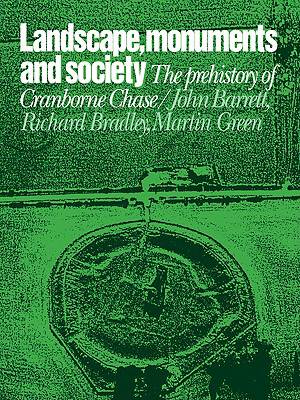
- Afhalen na 1 uur in een winkel met voorraad
- Gratis thuislevering in België vanaf € 30
- Ruim aanbod met 7 miljoen producten
- Afhalen na 1 uur in een winkel met voorraad
- Gratis thuislevering in België vanaf € 30
- Ruim aanbod met 7 miljoen producten
Zoeken
Landscape, Monuments and Society
The Prehistory of Cranborne Chase
John C Barrett, Martin Green, Richard Bradley
Paperback | Engels
€ 73,95
+ 147 punten
Omschrijving
Cranborne Chase, in central southern England, is the area where British field archaeology developed in its modern form. The site of General Pitt Rivers' pioneering excavations in the nineteenth century, Cranborne Chase also provides a microcosm of virtually all the major types of filed monument present in southern England as a whole. Much of the archaeological material has fortuitously survived, offering the fullest chronological cover of any part of the prehistoric British landscape. Martin Green began working in this region in 1968 and was joined by John Barrett and Richard Bradley in 1977 for a fuller programme of survey and excavation that lasted for nearly ten years. In this important study, they apply some of the questions in prehistory to one of the first regions of the country to be studied in such detail. The book is a regional study of long-term change in British prehistory, and contains a unique collection of data. A landmark in the archaeological literature, it will be essential reading for students and scholars of British prehistory and social and historical geography, and also for all those involved with archaeological methods.
Specificaties
Betrokkenen
- Auteur(s):
- Uitgeverij:
Inhoud
- Aantal bladzijden:
- 268
- Taal:
- Engels
Eigenschappen
- Productcode (EAN):
- 9780521109222
- Verschijningsdatum:
- 18/06/2009
- Uitvoering:
- Paperback
- Formaat:
- Trade paperback (VS)
- Afmetingen:
- 210 mm x 279 mm
- Gewicht:
- 607 g

Alleen bij Standaard Boekhandel
+ 147 punten op je klantenkaart van Standaard Boekhandel
Beoordelingen
We publiceren alleen reviews die voldoen aan de voorwaarden voor reviews. Bekijk onze voorwaarden voor reviews.








